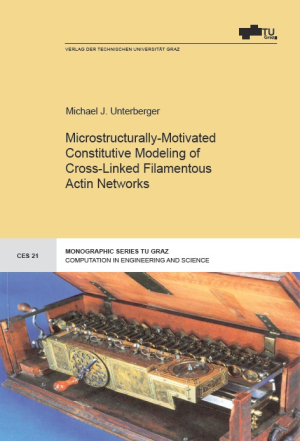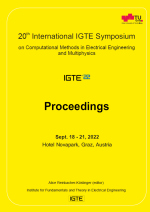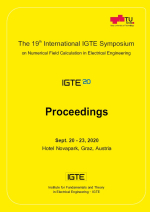Filamentous actin is an important building block of the cytoskeleton which gives a cell its stability and facilitates motility and division. It is also related to several diseases such as malaria and several types of cancer. The hierarchical structure of actin networks spans several length scales, and microstructurally-motivated continuum models may provide valuable insights in the mechanics of large systems containing such networks. Simultaneously, these models deliver information about the processes on the smaller scale.
This volume introduces the reader to the mechanical multiscale modeling of filamentous actin and it critically reviews the current literature. In order to cover non-affine and affine deformations in actin networks, two methods to derive continuum mechanical models are presented, both based on homogenization over a unit micro-sphere. The models may be extended to also capture the viscoelastic properties, and the consideration of compliant linker proteins is proposed. The formulation is suitable for immediate implementation into finite element programs. The final chapter of this volume highlights the decisive influence of different boundary conditions when analyzing experimental data.
Ausgabe: kartoniert
ISBN: 978-3-85125-303-0
Umfang: 168 Seiten
Sprache: Englisch
Erschienen: November 2013
Reihe: Monographic Series TU Graz / Computation in Engineering and Science, Band 21
Vergriffen!
Filamentous actin is an important building block of the cytoskeleton which gives a cell its stability and facilitates motility and division. It is also related to several diseases such as malaria and several types of cancer. The hierarchical structure of actin networks spans several length scales, and microstructurally-motivated continuum models may provide valuable insights in the mechanics of large systems containing such networks. Simultaneously, these models deliver information about the processes on the smaller scale.
This volume introduces the reader to the mechanical multiscale modeling of filamentous actin and it critically reviews the current literature. In order to cover non-affine and affine deformations in actin networks, two methods to derive continuum mechanical models are presented, both based on homogenization over a unit micro-sphere. The models may be extended to also capture the viscoelastic properties, and the consideration of compliant linker proteins is proposed. The formulation is suitable for immediate implementation into finite element programs. The final chapter of this volume highlights the decisive influence of different boundary conditions when analyzing experimental data.





